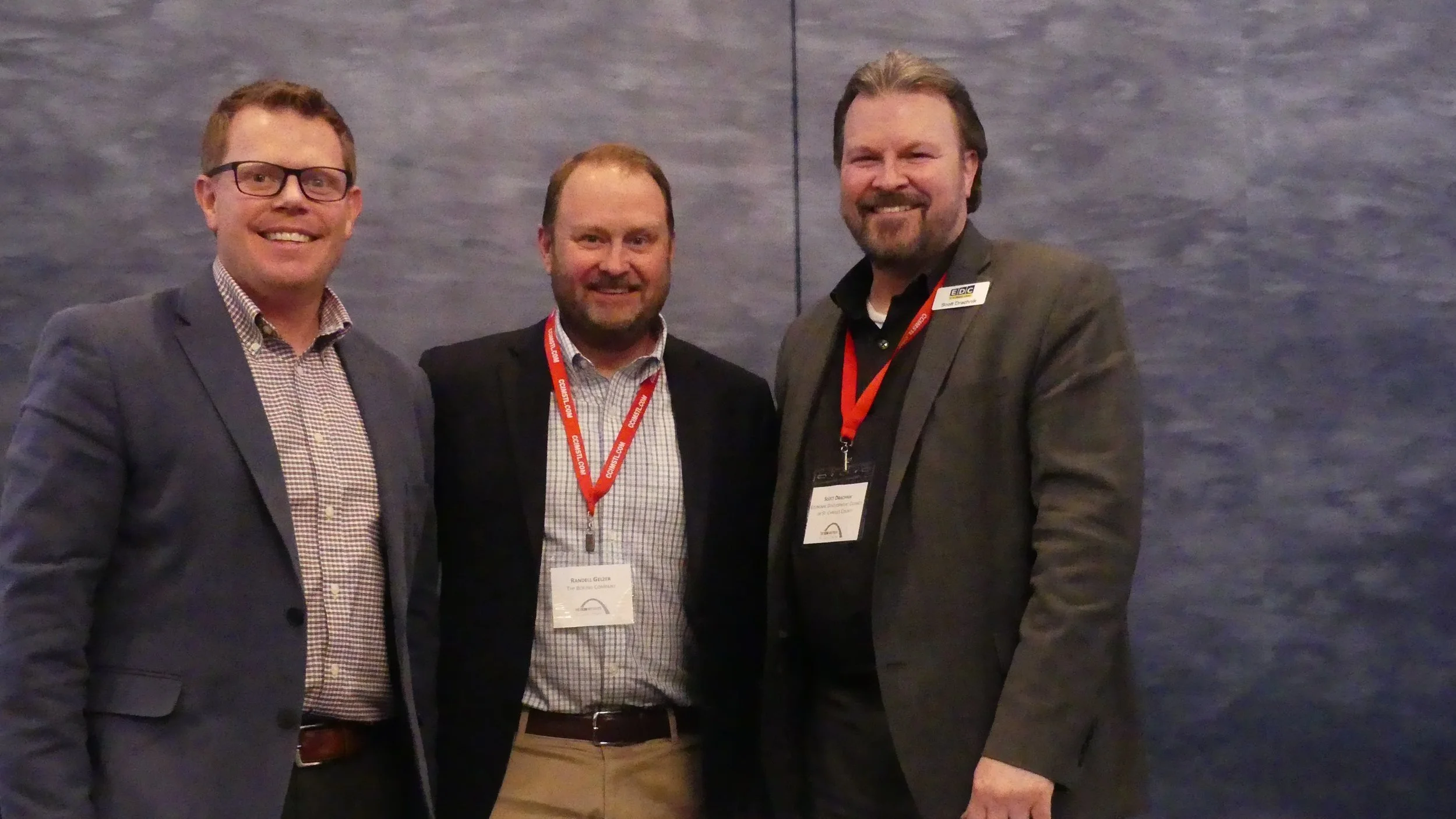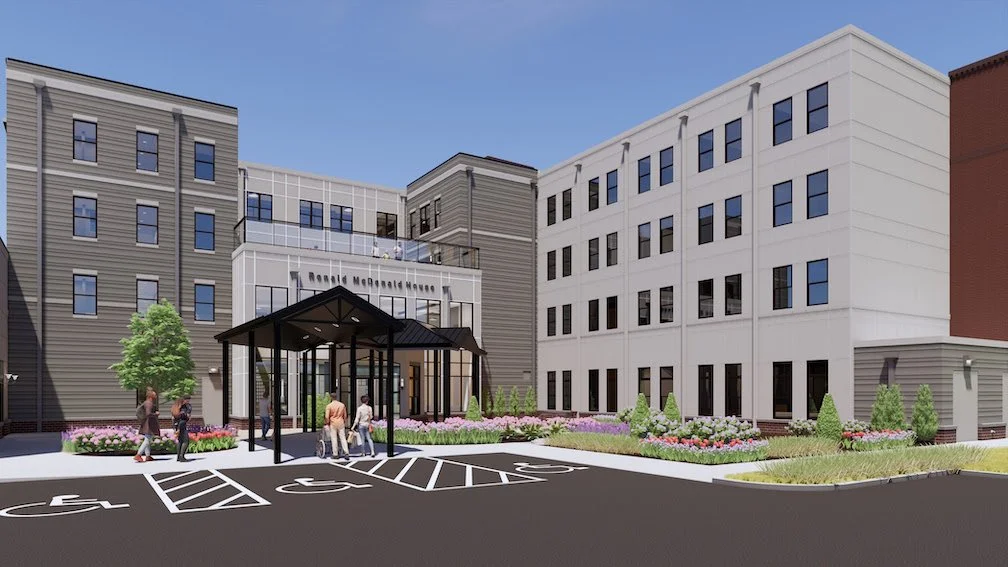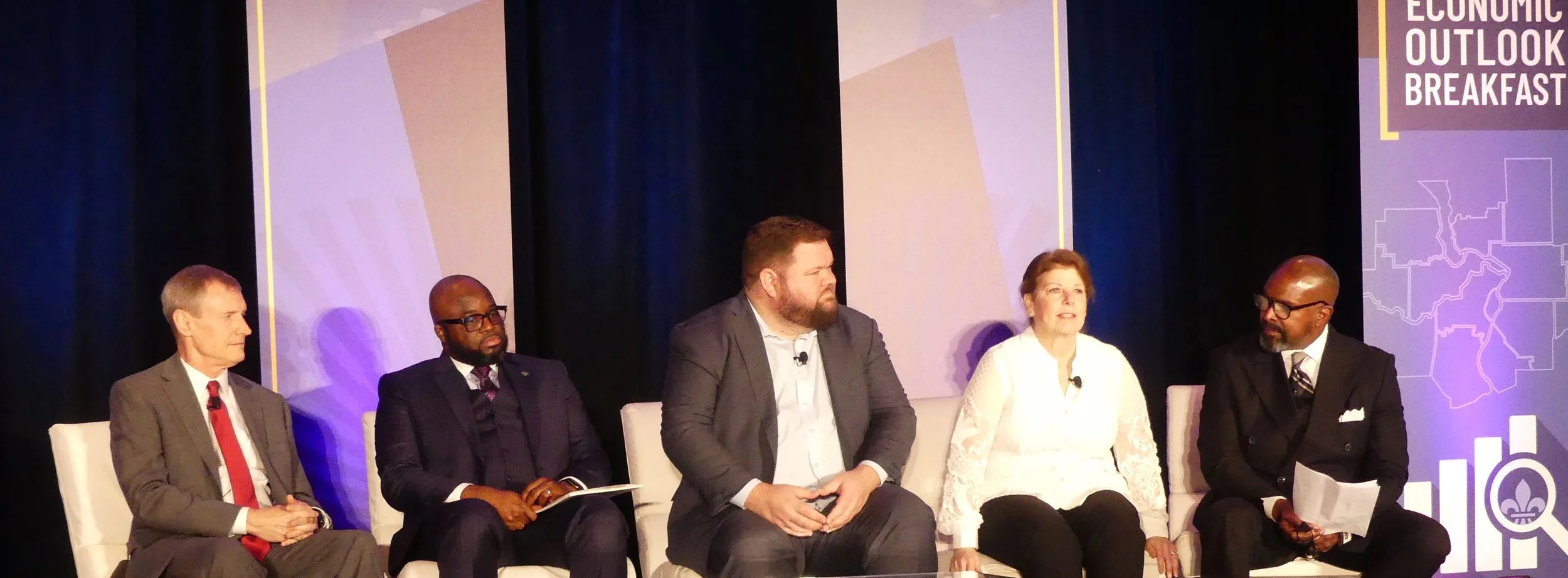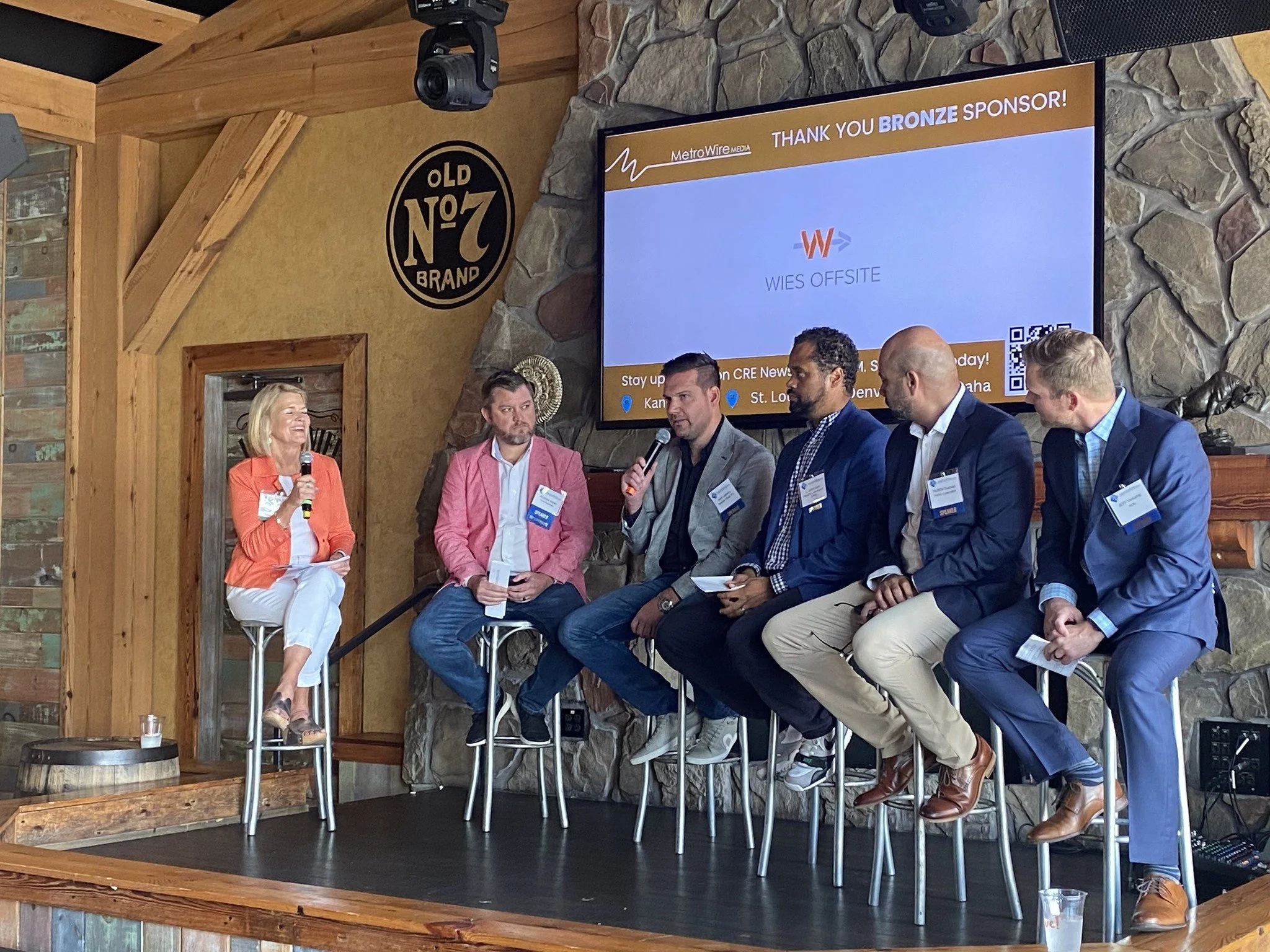Feature photo credit: MWM STL | Ruth Thaler-Carter
Ronald McDonald House plans to supersize in Forest Park Southeast
Behind the scenes at iconic St. Louis outdoor theater
Speakeasy-style bar tunnels beneath City Foundry STL
Gateway South project aims to position St. Louis as a national hub
World’s largest indoor Padel and Pickleball facility opens in St. Louis
SSM Health unveils state-of-the-art outpatient center in Warrenton
Mega developments redefine St. Louis region's landscape
Why St. Louis? CCIM-STL panel illuminates appeal of Gateway to the West
The St. Louis region is in good shape and offers worthwhile opportunities for commercial real estate, according to speakers at a February 13 CCIM-STL meeting at the Meridien Hotel about “Why St. Louis?”
Jim Fredericks, partner in luncheon sponsor Armstrong Teasdale, set the tone for the program by saying, “I believe in St. Louis, and I believe in what we can do for St. Louis.”
Doug Rasmussen, founder and CEO of Steadfast City Economic & Community Partners, noted that his focus on site selection benefits from the interconnections among all 15 St. Louis counties, and that assumptions about the airport are not a big deal: “The lack of an airport hub isn’t that important,” he said. “We have parity in travel prices,” so business travelers have fewer concerns when planning trips.
The St. Louis region can “line up well in risk management,” Rasmussen said. “We can serve the globe from one location. We have diverse options for the supply chain. We have a reliable infrastructure, including weather. We have an industrial heritage and sites that can be redeveloped. We can provide a talent supply chain from the shop floor to the C-suite.”
The region does need more tech workers and residents in general, he noted.
“The challenge for real estate professionals is to think of St. Louis as unique and focus on what’s in our own backyard for all aspects of what a company might need,” Rasmussen said.
For Maggie Kost, chief attraction officer at Greater St. Louis, Inc., promoting St. Louis to potential new businesses is “truly a team sport.”
Her organization primarily focuses on companies in advanced manufacturing (automotive, aerospace, and food and beverage), agtech, bioscience and health, digital transformation, financial and business services, and geospatial. The span of industries and occupations is “an asset for spouses when [a business owner] is relocating here,” she said.
Kost and her team present St. Louis as “a place to start up, stand out, and stay.” St. Louisans “are hard on ourselves, and we shouldn’t be,” she added.
She noted that the metro St. Louis region is ranked as number one in the Mississippi River corridor. “We are putting St. Louis on the global stage,” she said. That’s due to the area’s “transport modal hub, great culture, affordable housing and minimal commutes,” among other qualities.
Commercial real estate professionals would benefit from thinking of Greater St. Louis, Inc. as “a resource and part of your team,” Kost said.
Robert (Bob) Millstone, president and founder of the The Millstone Company, outlined the ways that the Gateway South project, a 100-acre master-planned redevelopment along the riverfront, aims to enhance St. Louis as number one in construction innovation. It will be “a walkable, mixed-use downtown focused on cross-pollination,” Millstone said, at a total estimate cost of $1.2 billion.
Phase 1 is expected to be complete in two years, with work scheduled to begin in March, Millstone said — an impressive goal. It already has $200 million in incentives and $25 million in out-of-town investments, as well as “real local manufacturing companies that will anchor the project.”
Reflecting on the history of the area, “we’re excited about the next 100 years,” Millstone said.
Kost also noted that the St. Louis area’s colleges and universities contribute substantially to the region’s appeal to new and existing businesses and nonprofit organizations as “tremendously important for filling the talent pipeline and innovating.”
Millstone added that “we also have to keep tech training in mind”; not just area universities but also institutions like Rankin Tech and the offerings of the community college system.
Kost agreed: “A lot of people don’t realize there are a lot of community college programs for retraining. It’s all set up to address (business) needs. The community colleges and Rankin understand (what companies need).”
Another key to the region’s future, according to Rasmussen, will be promoting its “cool factor — making it an area that young people want to go to (and stay in). It’s mostly a matter of making (our advantages) known.”
Immigration trends also work in favor of St. Louis, panelists agreed. “It’s very important for us that St. Louis has always been really good at welcoming immigrants,” Kost said, while Rasmussen said that “my lens as a site selector is that St. Louis is not as well-known as we could be (in this respect) — it’s important to make (us) more of a landing place for new Americans.”
The same things that attract new companies and people to the area are a factor in retaining graduates and employees, Kost said.
Millstone identified the role of commercial real estate professionals as creating jobs for the future and convincing potential new businesses and residents that “this is a good place to live, work and play.” Being “ambassadors for the region” is also a vital role for the profession.
“Projects have to integrate with what leaders and the community want,” Millstone added.
That perspective fits with plans for the Greenway project, which Kost called “incredibly important in quality of life and an asset in connectivity and bridging the divide.” It can also be promoted as a tourist attraction, Rasmussen said.
The session wrapped up with perspectives on downtown. “Downtown is incredibly important,” Kost said. “We have locations (that are ideal for) industrial reuse, office space that is very affordable compared to other areas. We’re making sure that we have the tools for redeveloping spaces (so employees will want to come back to offices).”
The answer to “Why St. Louis?” comes down to recognizing that “we’re a region and we live and die as a region,” Millstone said. “St. Louis can be a success, downtown can be a success, but we have to invest.”
























